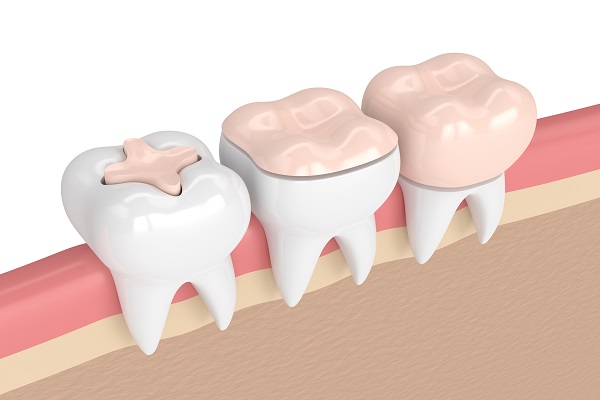How Soon Can I Eat After Getting a Dental Inlay?

One of the primary goals of dentists is to safeguard the integrity of the teeth and prevent the development of cavities. Still, when they occur (especially in the center of teeth), the go-to procedure is usually a dental inlay. The reason for the popularity of the inlay is that it would allow for treatment without using a crown or removing the enamel of teeth.
However, one of the few complications or inconveniences that patients may experience with using an inlay is the effect on their diet immediately post-procedure. The procedure is a highly effective one and generally lasts a long time. This effectiveness is also aided and maintained by proper oral hygiene. However, immediately after getting an inlay, it is advisable to stay away from certain foods.
What does the procedure include?
The dental inlay is a simple procedure but usually takes a few weeks to complete. This is because of the needed to manufacture and design an inlay of the right size and shape. The procedure would consist of drilling into the damaged tooth, removing decayed parts, and then measuring the remaining parts of the tooth.
These measurements are then used in creating an inlay for insertion into the resulting space(s). In the meantime, though, the space cannot be left exposed, and so, the dentists might utilize a temporary filling material. Once ready, the filling material can be removed, and the inlay can be placed in.
Most of the time, the inlays are usually from porcelain or resin. This is particularly important as they are more durable than the composites or amalgams from which typical fillings are made. Furthermore, they allow for the color of the inlay to be matched to the color of the teeth, making the procedure unnoticeable.
Post-procedural precautions
We have earlier stated that certain precautions would need to be taken to guarantee its success following the procedure. Most of the time, patients tend to experience increased sensitivity to hot or cold substances after the procedure has been completed, but this should be expected and should pass after some time.
The most significant procedural breach usually comes during the treatment period when the temporary filling has been placed in. This temporary filling is usually designed to be removed easily and exposing them to certain kinds of food (such as sticky foods) could lead to their removal.
That said, the standard amount of time that should be allowed to elapse before eating can continue as usual would vary from person to person. This is because the time would depend on how long the anesthetic remains potent after the treatment has been completed. Nothing is to be eaten or drunk until the anesthetic has worn off.
In addition, no hard foods (like nuts) should be eaten until 24 hours after the dental inlay has been completed. After the expiration of these 24 hours, any discomfort should be reported to the dentist.
Request an appointment here: https://drcalldental.com or call Dr. Call Dental Center at (706) 425-6240 for an appointment in our Dalton office.
Check out what others are saying about our dental services on Yelp: Dental inlay in Dalton, GA.
Related Posts
Dental implant surgery can bring back your stunning smile. Tooth loss makes eating, speaking, and even smiling difficult. It affects a person’s self-esteem. Getting implants can make you feel good about yourself again. Here are the details on how a dental implant can help you smile confidently again.People who use removable restorations often complain about…
Dental implant restorations have transformed dentistry by offering a versatile and reliable solution for replacing missing teeth. This approach to smile restoration seamlessly combines durability and natural aesthetics, restoring oral function and appearance. Because implant restorations can support different types of dental prosthetics, they address a variety of needs while preserving oral health. Understanding the…
The dental restoration that an implant dentist provides has become the preferred option for replacing lost teeth. Patients who are considering dental implants often have many questions about the procedure. In this article, we go over questions that you may want to ask the implant dentist when you visit the office for a consultation. The…
Anyone who is currently wearing dentures and looking for a more durable solution needs to consider dental implants. The same is true for anyone who is missing teeth and has yet to replace them. Implants are the most durable and natural-looking way to replace missing teeth, making them an excellent alternative to removable dentures. They…


